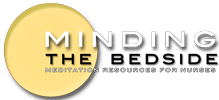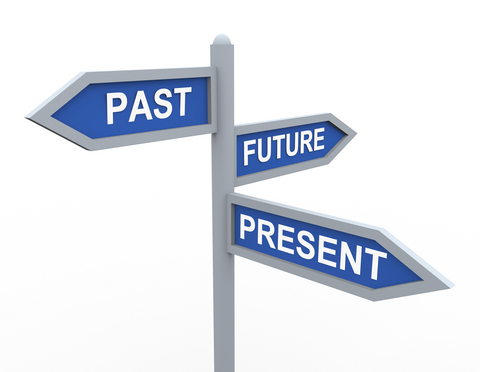 There are so many ways to meditate, many of which have been discussed on this blog. And, there are so many reasons to meditate.
There are so many ways to meditate, many of which have been discussed on this blog. And, there are so many reasons to meditate.
What comes up repeatedly in discussions that I have with others is how our past and the emotions related to the past can intrude on our present life and within our practice of meditation.
Since meditation is – essentially – the state of non-distraction, based upon mindfulness, meditative awareness and spaciousness – within this state, there is little room for ruminating upon past traumas, emotional injuries, and patterns that have predominated our lives with their insistence upon existence. However, what happens is that these experiences, or rather our thoughts about them and the feeling states associated with them, flood our minds when we begin to meditate.
As we become familiar with meditation, we begin to see that our thoughts are insubstantial. They arise for a while and then, given space and openness, fade back into the landscape of our mind. The problem, as we’ve discussed many times, is when we hold on to our thoughts as something “real,” and begin to get caught up in the stories that we make up about our thoughts.
What’s different about strong emotions and the thoughts associated with them is that they charge us physiologically. That is, they hook us on a physical level that is very “real” when compared with simply the thought that isn’t charged. We feel it, our heart pounding or our stomach in knots. It seems very real, even if the event took place decades ago.
Meditating with the present in mind means that even when something is charged, even when we feel it – physically – in our gut, or in our pounding heart, we recognize it to be just as impermanent and transient as any other thoughts and emotions.
Let’s practice a very short exercise, one that you can do RIGHT NOW, in less than a minute.
Just for a moment, recall a time when you were blamed for something that you didn’t do, or a time when someone dumped their emotional baggage on you for something that you had done, and you took it personally. It can be anyone—a patient, peer, perhaps your spouse, parent, or child. Feel into it, physically and psychologically. Pause.
Have you ever felt so victimized by someone else’s “stuff” that you just felt like screaming at them or hitting them? Feel that feeling now. Really bring into your mind the thoughts that occurred. Pause.
Allow your physiology to be with that moment, and allow your body to feel how it felt then.
Did you find yourself ruminating on the other person’s faults? Did you have to suppress your own reactions? Bring up the thoughts that surrounded this event clearly in your mind.
For a brief moment, revisit the feelings of discomfort that accompany your memory of this event, and relive in your body and mind what it felt like. Allow that discomfort to reside, ever so briefly, within your physiology. If you can do this, continue with it for about a minute. Then, just let it all go and come back to the present.
How was that? Were you able to feel some of the emotions and experience some of the physiology associated with that event? If not, no worries, it’s just an exercise. If so, isn’t it amazing that even though the event isn’t going on now, you were able to feel some of the same sensations that you felt when it occurred? What’s going on?
What happens is that we experience a physical sensation, like “experiencing a memory,” and we take it to be real. In fact, it’s just our body reacting to our thoughts and emotions. And like our thoughts and emotions, as we learn to practice meditation and to become more stable in our practice,we really can let them go….
If you’d like a longer version of an exercise to work with strong emotions, please download this PDF: Working With Difficult Emotions
How does this work for you? Please leave a comment below to let me and others know what works and what doesn’t.
Also, you may want to read a recent post, How to Meditate: Good Thoughts, Bad Thoughts…Five Key Points, for some good information on how to work with your thoughts.
For more information on how to meditate, please see the Related Posts below. Also, don’t forget to download the free ebook, Can Meditation Change the Way that You View Your World?, for help with getting started in you meditation practice, and download the ebook, How to Work with the Four Distractions to Meditation to learn how to deal with some of the obstacles to meditation.
ALSO, visit the Media, page where you can find articles, MP3 tracks for downloading, and videos on the subject of meditation.
As always, please feel free to share your comments. And, as always, please feel free to contact me if you’d like to see additional content or other discussions on this site.



Dang straight it feels ‘real’! The interesting thing for me is when it hits the primitive brain. Immediately ‘fight or flight’ kicks in…then I run. Hard to slow down or ‘let go’ when that primitive brain is saying ‘run, Forest, run.! Oh, how ‘letting go’ would feel so much nicer than running. Thanks Jerome for this lovely article and exercise…so so helpful!
Hey Deana. Thanks so much for your comment. Yes indeed, it does feel “real” because…we’re feeling it! I think that’s the disconnect for me, is when I feel something and then somehow that translates into that it’s “real.” Hard to contradict the reptilian brain when it says, “fight or flee!” That’s where consistent and gradual practice comes into play. Slowly chipping away at primitive emotions. Take care. Jerome